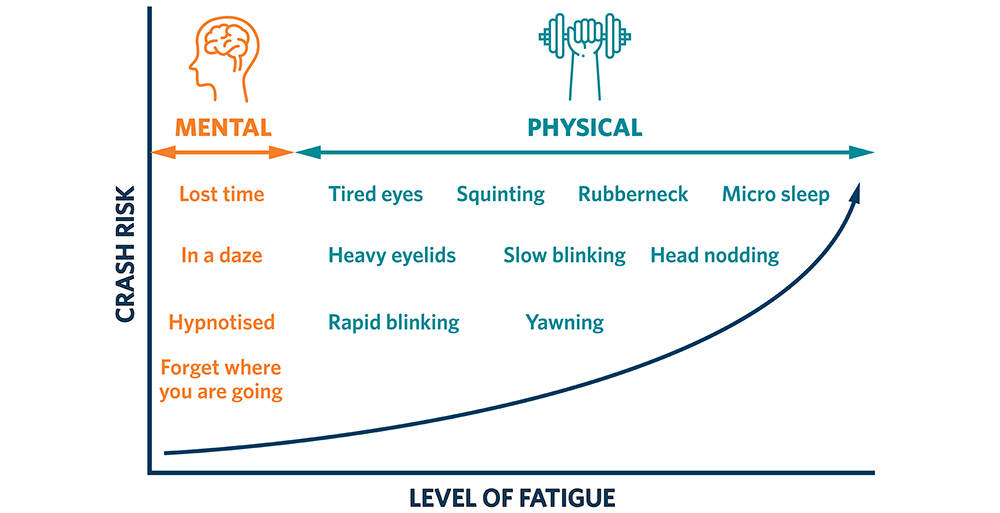People often think that driver fatigue means falling asleep at the wheel. Falling asleep, however, is an extreme form of fatigue.
Fatigue is tiredness, weariness or exhaustion. You can be fatigued enough for it to impair your driving long before you ‘nod off’ at the wheel.
As a driver, fatigue can cause you several problems including:
Being tired can also cause you to drift in and out of sleep without knowing it. Sleep experts call this microsleep. If this happens while driving, it can cost you your life.
These naps can last between three and five seconds and are the main cause of fatigue-related crashes where the driver runs off the road.
In 2022, fatigue was a factor in 23 fatal crashes and 80 serious injury crashes. These crashes are usually the most serious because the driver doesn’t brake before colliding with another object.
Relationship between fatigue level and crash risk

While all drivers are likely to experience fatigue to some degree, fatigue is more likely for people in the following groups – ultimately leading to a higher crash risk:
Fatigue often combines with other factors, such as substance use and speed, to cause road crashes.
Substance use such as drink driving or medication related impaired driving is particularly dangerous in combination with fatigue. Alcohol can affect a driver’s alertness long before the legal limit is reached. Any amount of substance use can combine with fatigue to affect your driving.
Speed and fatigue are also a bad combination. As your speed increases you have less time to react and when you’re tired, fatigue also slows your reactions. Even when speed doesn't cause a crash, it's what will most likely determine where someone is killed, injured or walks away from the crash.
Key factors that affect driving ability
Between 3am and 5am our body clocks (circadian rhythms) programme us to feel sleepy. There is also a secondary peak in sleepiness between 3pm and 5pm. This is the time of the day when physical and mental performance is at its worst. There are broad peaks in fatigue-related crashes where people are killed and seriously injured in the early morning and through the afternoon.
Look out for the following signs that you are entering, or are in, the ‘fatigue danger zone’ for driving:
While driving:
However, these should only be considered emergency counter measures. As a driver you should not be relying on these on a regular basis, but instead should consider what changes you can make to your lifestyle which will help you get the sleep that you need.
Don’t be tempted to keep driving when you are tired just because you are close to your destination. Many tiredness-related collisions occur close to home because the driver has relaxed, and the body takes this as a signal that it is ok to fall asleep.
Many of the things people do to stop themselves falling asleep at the wheel are only effective for a very limited time. The following do not work and will refresh you only for a short while:
Once fatigue has set in, no amount of willpower will keep you awake. The only answer is sleep and you should stop for a short nap or seek assistance to get home.
It really can be a matter of life and death.